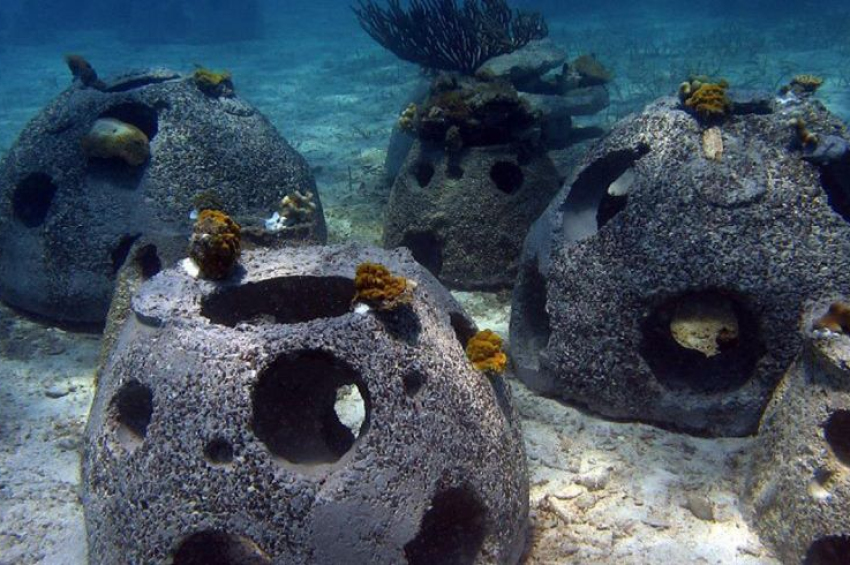Research: Artificial reefs can mimic real coral reefs
A new study by a team of British scientists, with support from Indonesian counterparts, says that the artificially-created coral reefs show signs of behavior like the real reefs, which are now threatened by global warming.
Their research, published in the journal Marine Biology, indicates that the continued rise of Earth's average temperature, which in the second half of last year surpassed the critical 1.5°C threshold agreed upon by global leaders, casts a growing pessimism over the survival of coral reefs. The destruction of these natural defenses of oceans poses risks not only to marine life, but also to coastline communities dependent on sea food and tourism.

Reefs formed on a metal structure.
While the restoration of all lost reefs may not be feasible, scientists are exploring alternative methods to preserve these vital habitats. One promising avenue involves the creation of artificial structures, typically constructed from materials like concrete, aimed at replicating the intricate forms and functionalities of natural reefs, the authors revealed.
Earlier studies show that artificial reefs can attract marine life and foster biodiversity comparable to their natural counterparts, thanks to their provision of solid surfaces for colonization by invertebrates like sponges and corals.
Additionally, these structures offer complex habitats, including crevices and tunnels, which support a variety of species like fish, crabs and octopus.
More to read:
As insect populations decrease, wildflowers started pollinating themselves
However, until recently, it remained uncertain whether artificial reefs primarily attracted wildlife from nearby natural reefs or facilitated the development of entirely new communities. This distinction is crucial, because artificial structures must be self-sustaining to effectively replace natural reefs in the event of their demise due to climate change.
The new study, conducted in the tropics, specifically in north Bali, Indonesia, sheds light on this question. The researchers’ findings suggest that while artificial reefs are not yet fully equivalent to their natural counterparts, they do demonstrate promising signs of progress.
One key function of coral reefs is the rapid processing of nutrients within their ecosystems, a phenomenon known as Darwin's Paradox. Natural reefs efficiently circulate nutrients, preventing the accumulation that could lead to overgrowth by algae and subsequent reef degradation.
The study compared nutrient levels and storage mechanisms between natural and artificial reefs, revealing similarities in nutrient processing, indicating the potential for artificial reefs to sustain diverse and abundant marine life. Despite covering a small area compared to natural reefs, the artificial structures in Bali are mimicking functionalities akin to natural reefs.

Naturally-formed coral reefs.
Water samples collected near these structures displayed high levels of phosphates, indicative of active nutrient recycling, while sediment samples revealed comparable nutrient levels to those found near natural reefs. However, differences in carbon storage suggest that further colonization by invertebrate species may be necessary for artificial reefs to fully emulate their natural counterparts.
While artificial reefs cannot single-handedly mitigate the threats posed by climate change to coral ecosystems, they offer a glimmer of hope for communities affected by reef loss, the authors stressed.
***
NewsCafe relies in its reporting on research papers that need to be cracked down to average understanding. Some even need to be paid for. Help us pay for science reports to get more interesting stories. Use PayPal: office[at]rudeana.com or paypal.me/newscafeeu.







